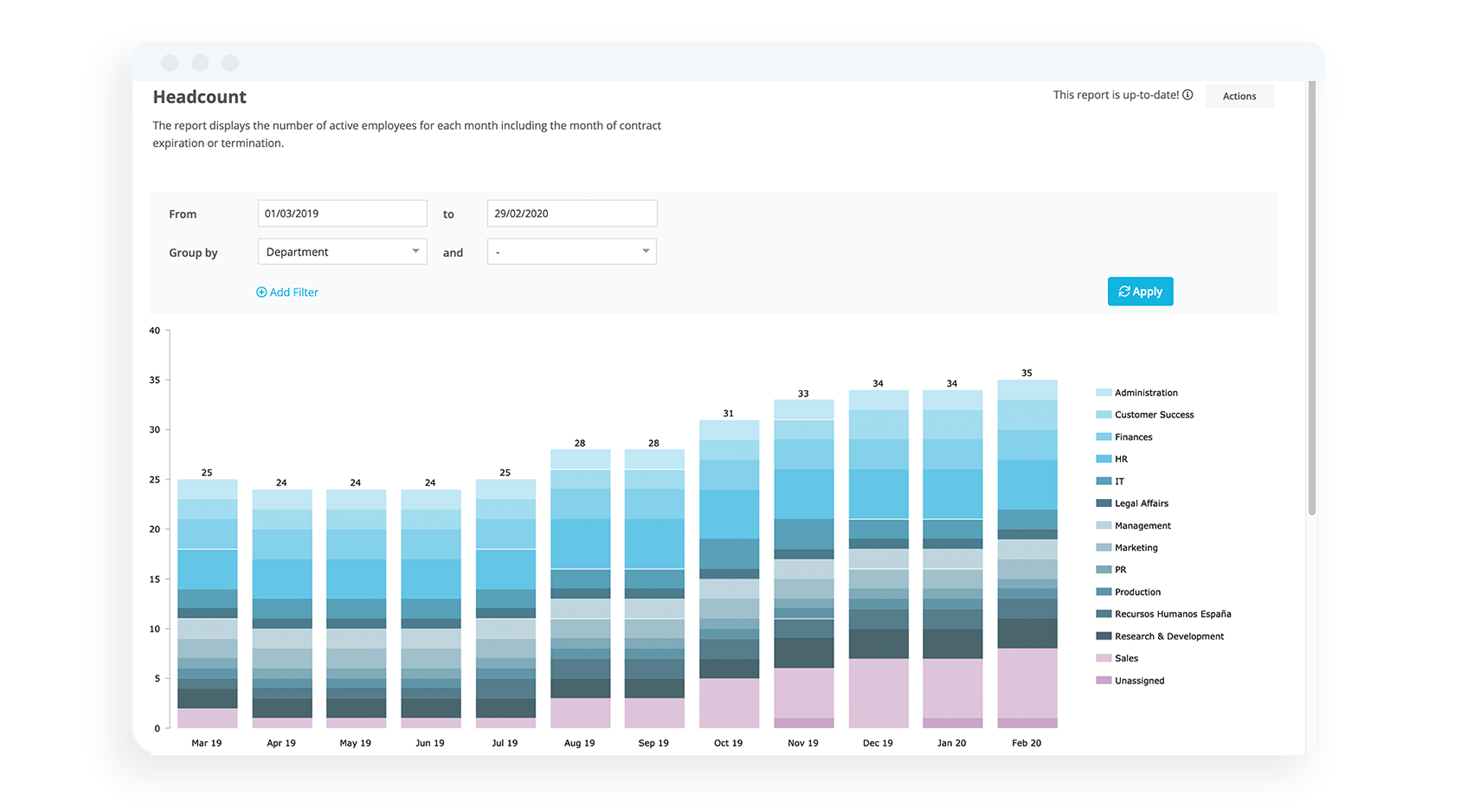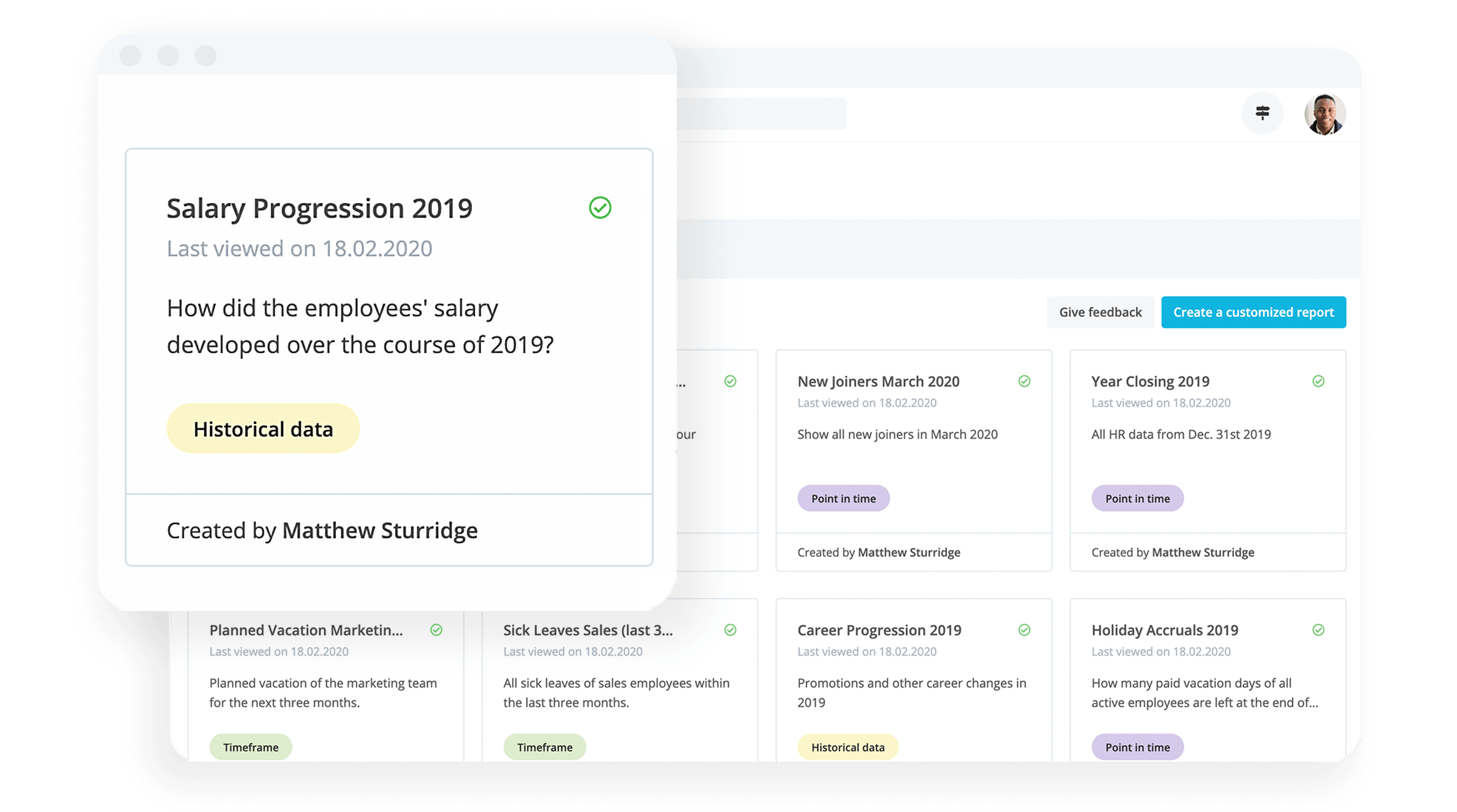Understanding Full-Time Equivalent (FTE): A comprehensive guide to calculations and applications

What does full-time equivalent (FTE) mean? In short, it is a crucial term that is important for HR specialists and accountants alike. There are a wealth of situations in which knowing the meaning of FTE and how to calculate it can be quite useful. Understanding your FTE is crucial for effective workforce planning, budgeting and legal compliance.
FTE (Full-Time Equivalent) impacts overall organisational efficiency by ensuring adequate staffing levels to meet operational needs. It helps organisations allocate resources effectively, manage workload distribution and maintain productivity.
By accurately calculating FTE, companies can avoid understaffing or overstaffing, which can lead to inefficiencies and increased costs. FTE also provides a standardised measure for comparing staffing levels across different departments and organisations.
Here's how you can use Personio to run FTE reports instantly.What is full-time equivalent (FTE)?
Full-time equivalent, or FTE, measures the total amount of full-time employees working at any one organisation. It is a way of adding up the hours of full-time, part-time and various other types of employees into measurable 'full-time' units.
FTE is the number of determined full-time positions in an organisation. It is used to count employees depending on their degree of employment.
Nowadays, it is also an effective measure of productivity in terms of staff, as the Full-Time Equivalent will allow you to count the entire workforce, including full-time workers, part-time employees and even those hired to work only one day per week.
FTE helps organisations allocate resources effectively, manage workload distribution, and assess staffing needs. It is used in various business scenarios, such as calculating labour costs, determining the optimal number of employees for projects and evaluating the impact of workforce changes on productivity.
For example, a company can use FTE to compare the staffing levels of its full-time, part-time, and contract employees, ensuring that the workforce is adequately sized and aligned with business objectives.
An example of full-time equivalent at work
Let's say your company considers a full-time workweek to be 40 hours. In your team, you have Jennifer who works 40 hours per week, and you have 3 part-time employees: Daniel, who works 5 hours per week, Nicole, who works 15, and Bobby, who works 20.
Now, Jennifer is a full-time employee, so her FTE is 1.0. Daniel, Nicole and Bobby do not work a full 40 hours a week, and to calculate the Full-Time Equivalent of the hours they work, you must divide each employee’s working hours by the company’s hours for a full-time workweek.
Why calculating FTE is essential for HR management
FTE plays a key role in HR decision-making, such as optimising headcount, managing labour costs and ensuring compliance with employment laws. FTE also plays a role in making informed decisions about promotions, dismissals and training programs.
There are companies that have a significant number of people working part-time, i.e., workers who spend only a short time in the company.
What follows are some of the main purposes of calculating your company’s FTE:
To see if the productivity of the company is positively influenced by the increased number of part-time employees
To find out what the total productivity is, based on the real working hours of your staff
To compare your company’s data with your competitors and to find out if their FTE is higher or lower than yours
To plan upcoming projects and the total number of people to be scheduled for these tasks, both full and part-time
Calculate FTEs instantly with Personio

Personio's FTE report offers numerous filter options when calculating the FTE, e.g. B. Period and departments. Calculating FTEs becomes child's play!
Try it todayStep-by-step guide to calculating FTE
Calculating staff performance with FTE is simple. You only need to know two figures: the total actual hours worked and the total hours of the full working day. The first figure refers to the total sum of hours worked to be evaluated, the second to the total hours performed by full-time employees. Thus, you have the following:
FTE = total actual hours worked / total full-time hours
A practical example of calculating FTE
An electronics company has a production team of five people. Three of them work full-time (40 hours per week respectively) and the rest work 10 and 5 hours in total.
If you want to calculate the FTE, you first need to know how many actual hours have been worked. For this, you have 40 + 40 + 40 + 10 + 5 = 135 effective hours worked. Knowing that the full working week is 40 hours, you can apply the FTE formula:
Actual hours worked / hours of full-time
In this case it would be 135 ÷ 40 = 3.37. What does this result mean? Those five workers are in fact equivalent to 3.37 full-time workers.
Summary: How to work out FTE
Find the total hours of part-time employees.
Find the total hours worked by full-time employees.
Add the two values.
Divide the calculated total by the number of hours that a full-time equivalent works.
The underlying period can be, for example, a day, a month or even a year.
Here are detailed instructions for how to now do this at scale:
List all employees and hours worked
Define full-time hours
Calculate annual hours worked
Calculate FTE for part-time employees
Calculate total FTE
For example, in a retail company, FTE can be used to manage seasonal employees effectively. This includes estimating peak staffing needs, calculating FTE requirements, hiring temporary employees, monitoring FTE levels, and transitioning back to regular staffing.
Using these metrics, the company can then ensure that it has the right number of employees in place to meet customer demand, avoid inefficiencies, and optimise labour costs during peak periods.
Practical applications of FTE in business
HR managers can apply FTE calculations in various contexts:
Salary determination: To calculate fair salaries for part-time employees.
Resource allocation: To effectively plan and distribute resources across projects.
Performance analysis: To assess team productivity and optimise workforce distribution.
FTE and compliance with employment laws
FTE has a huge importance in meeting legal requirements. For example, the UK's National Insurance Contributions (NICs) are calculated based on an employee's weekly earnings.
NIC calculation example:
Weekly earnings:
£250
Primary threshold:
£265 (as of April 2024)
Secondary threshold:
£988 (as of April 2024)
If an employee's weekly earnings are above the primary threshold but below the secondary threshold, they will pay Class 1 NICs at a rate of 12.5%. In this example, the employee would pay £1.88 in NICs per week.
Common FTE questions answered
What’s the difference between FTE and headcount?
Headcount is the total number of employees, while FTE is the equivalent number of full-time employees needed to perform the same amount of work. FTE takes into account the hours worked by part-time and contract employees, providing a more accurate representation of the organisation's labour costs and workload distribution.
What does FTE 1.0, 0.75, or 0.5 mean?
FTE is a unit of measurement that represents the equivalent number of full-time employees needed to perform the same amount of work. FTE 1.0 means a full-time employee, 0.75 means three-quarters of a full-time workweek, and 0.5 means half of a full-time workweek.
How to adjust FTE calculations for different full-time definitions
To adjust FTE calculations for different full-time definitions, you need to determine the standard workweek for your organisation. Once you have this information, divide the average weekly hours worked by an employee by the standard workweek hours to calculate their FTE.
For example, if the standard workweek is 40 hours and an employee works 30 hours per week, their FTE would be 0.75. This adjustment ensures that FTE calculations accurately reflect the actual workload and staffing needs based on your organisation's specific definition of full-time employment.
Conclusion
FTE can serve as a parameter for your decision-making as a manager regarding promotions, dismissals, division of tasks, training and talent development. Through this, you can identify the needs and internal capabilities of your employees more easily, as well as exercise more strategic management.
Determining the FTE of your company is crucial for its productivity. Imagine that, with the same FTE, an employee can deliver 100 units, while another only delivers 30. In this case, the calculation may show that the first professional is overqualified for the position, whilst the other needs more training and development.
The importance of the FTE also depends on the country your business is operating in. For example, there are several reasons for wage deductions in the UK, and the Full-Time Equivalent can help you determine certain contributing factors such as:
Measuring the impact of unjustified absences
Minimising idle working hours
Evaluating the need for new hires or cuts
Understanding and calculating FTE is crucial for HR managers to improve organisational efficiency and make informed decisions. FTE provides a standardised way to measure workforce size, allocate resources effectively, and manage workload distribution.
By regularly reviewing FTE calculations, HR managers can ensure that staffing levels align with company goals and legal obligations. This can help optimise labour costs, enhance productivity and support overall business success.
How technology can help you calculate FTE

Personio offers a host of valuable reporting and analytics features that simplify HR management, improve reporting accuracy, and support compliance efforts so that you can have access to critical HR KPIs, such as FTE, at your fingertips.
Find out more or start a free trial today to see how it works.
